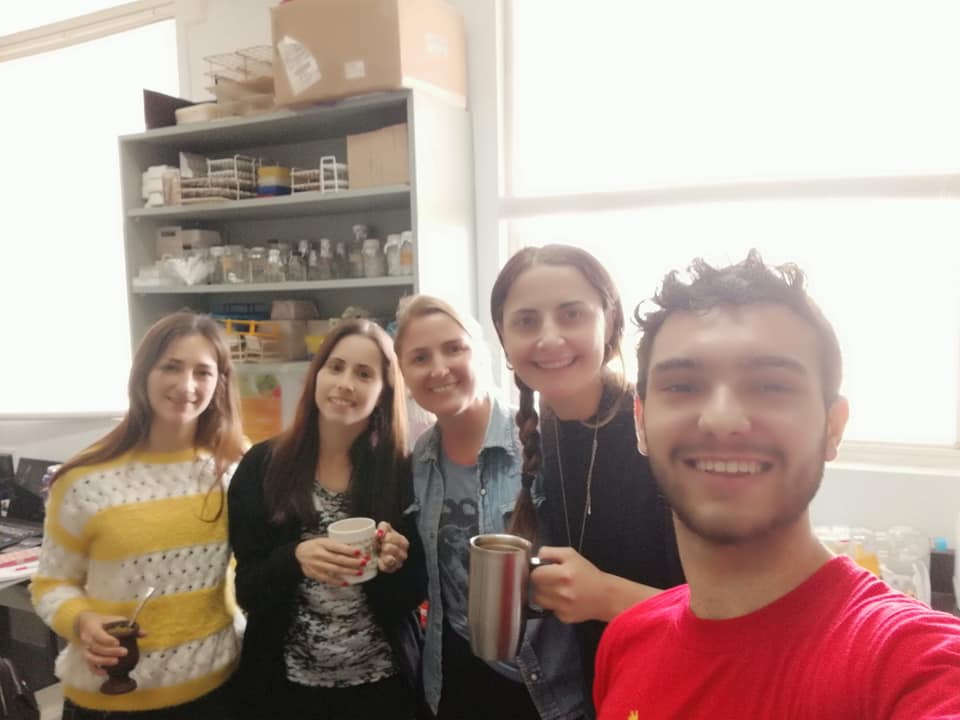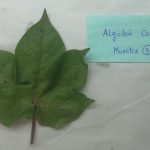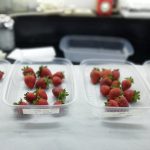- Anaerobic Parasite
- Aquatic Ecology
- Abiotic and biotic stress in plants
- Biochemistry and Physiology of Fruit Ripening
- Bovine and Ovine Biotechnologies
- Cell Biology and Biochemical Parasitology
- Comparative Neuroendocrinology
- Developmental Biology
- Environmental Microbial Ecology Laboratory
- Ichthyophysiology and Aquaculture
- Microorganism Plant Interactions
- Molecular Farming and Vaccines
- Molecular Parasitology
- Mycology and Edible Fungi
- Physiology and Assistance to Plant Breeding
- Phytobacteriology
- Photochemistry and Molecular Photobiology
- Plant Physiology
- Soil Microbiology
- Stem Cells and Gene Therapy
Laboratory of Biochemistry and Physiology of Fruit Ripening
Head
- Dra Natalia Marina Villarreal - Independent Researcher CONICET. Adjunct Professor UNSAM nvillarreal@intech.gov.ar
Members

-
Lic. Romina Bustos - Doctoral Fellow National Agency for Scientific and Technological Promotion rbustos@intech.gov.ar
Studients
- Matías Vicario
- Mariana Páez
Research Lines
– Strawberry
Strawberry (Fragaria x ananassa, Duch) is a soft fruit highly appreciated by consumers because of their organoleptic properties as well as nutritional quality. After harvest, strawberry high softening rate leads to a fast deterioration (mainly by fungal infections), both challenging fruit transportation and reducing fruit shelf life. In this fleshy fruit, softening is mainly caused by cell wall disassembly and middle lamella dissolution, being pectin metabolism a key control point for this process. In this sense, the use of more environment-friendly approaches to delay softening and to control diseases during postharvest is a matter of interest.
The area of focus is on understanding the mechanisms underlying strawberry cell wall response to several abiotic stimuli during postharvest fruit ripening, both from biochemical and molecular approaches. The effect of postharvest treatments on defense-related responses and fruit nutraceutical quality is also explored.
– Native fruits
Native fruits are attractive for productive and diverse agriculture which can help to diversify and generate incomes for developing countries. In that sense, adequate postharvest handling is quite relevant. We aim to contribute to regional economies through the study of the postharvest softening process and the nutraceutical value of native fruits from Buenos Aires Province and Argentina’s tropical forests.
The area of focus is on analyzing: – The changes in cell wall metabolism, vitamins, and antioxidants content during Tree Tomato (Solanum betaceum) and Pampas lily-of-the-valley (Salpichroa origanifolia) fruit softening. – The effect of postharvest treatments on cell wall metabolism, polymers, phenolic compounds, and ascorbic acid content, as well as the antioxidant capacity of native fruits.
Plants can host different bacterial communities on (epiphytes), and inside (endophytes) various plant organs. Some of them can suppress pathogenic microorganisms directly or indirectly, conferring plant protection. Direct beneficial effects for plants may include assistance on getting nutrients as well as the promotion of plant growth by modulation of growth-related hormones. Indirect benefits from endo- and epiphytes to plant host include the reduction of tissue damage after phytopathogen infection. It is interesting to study the molecular and biochemical properties of that kind of interaction, and their effects on pathogenesis. Plant defense mechanisms are complex and involved various metabolic signaling pathways that interact between them. Inoculation of plants with non-pathogenic bacteria can induce resistance against a broad spectrum of pathogenic organisms. As such, both elucidating plant defense mechanism as well as searching for biological control able to reduce fertilizer and pesticide use, has become increasingly important.
The area of focus is on studying the molecular and biochemical response provoked by beneficial bacteria (endo and epiphytes) against pathogen organisms, principally fungi. In our group, we are particularly interest in the plant cell wall and the study of the role of that in the interactions named above.
The line of research arises from the demand and need of agroecological producers, to be able to know the composition of the bio/natural inputs they manufacture and use, as well as the effect they cause in the soil and on the plants of the treated crops. The scope, in principle, will be in different fields and localities of the provinces of Buenos Aires and Santa Fe, and we hope that later it will have a much greater scope since we have the endorsement of the National Directorate in Agroecology. The general objective is to: Carry out a detailed physical-chemical and microbiological characterization of bio-fermented products produced by agroecological rural producers, as well as their effects on the soil and plants. The Specific Objectives are: – The global microbiological characterization of the bio-fermented products (nettle slurry, basic Supermagro, and the so-called Efficient Microorganisms). – The evaluation of the effects of using the bio-fermented products on the microbiology of the soil (rhizosphere of the treated plants). – The study of the effects of the use of bio-fermented products on the integrity of the plant cell walls of the treated plants.
Publications
Hirsch M., Burges PL, Migueliz L, Villarreal NM, Marina M. Isolation of beneficial bacteria from strawberry (Fragaria x ananassa, Duch). Potentialities for fungal disease control and plant growth promotion. Plant Growth Regulation 102, 135-152. 2024. https://doi.org/10.1007/
Langer S, Hirsch M, Burgues PL, Martínez GA; Civello M, Marina M, Villarreal NM. Biochemical and molecular traits underlying the quality preservation and defence enhancement by heat treatment in harvest-ripe strawberries. Scientia Horticulturae 333, 113287. 2024. https://doi.org/10.1016/j.
Lara I, Bustamante C, Villarreal N. Editorial: Fruit responses to biotic and abiotic Stressors during postharvest. Frontiers in Plant Science 13, 914841. 2022. https://doi.org/10.3389/fpls.2022.914841.
Langer SE, Marina M, Francese P, Civello PM, Martínez GA, Villarreal NM. New insights into the cell wall preservation by 1-methylcyclopropene treatment in harvest-ripe strawberry fruit. Scientia Horticulturae 299, 111032. 2022. https://doi.org/10.1016/j.scienta.2022.111032
Colavolpe MB, Villarreal NM, Langer SE, Romero FM, Martínez GA, Saini A, Ruiz OA, Marina M. Burkholderia sp. strain AU4i promotes Arabidopsis growth and increases plant defence response to necrotrophic pathogens. Journal of Plant Growth Regulation 40, 1939-1949. 2021. https://doi.org/10.1007/s00344-020-10238-6
Hirsch M, Langer SE, Marina M, Rosli HG, Civello PM, Martínez GA, Villarreal NM. Expression profiling of endo-xylanases during ripening of strawberry cultivars with contrasting softening rates. Influence of postharvest and hormonal treatments. Journal of the Science of Food and Agriculture 101, 3676-3684. 2021. https://doi.org/10.1002/jsfa.
Rossi FR, Gárriz A, Marina M, Pieckenstain FL. Modulation of polyamine metabolism in Arabidopsis thaliana by salicylic acid. Physiologia Plantarum 173, 843-855. 2021. https://doi.org/10.1111/
Langer SE, Marina M, Burgos JL, Martínez GA, Civello PM, Villarreal NM. Calcium chloride treatment modifies cell wall metabolism and activates defense responses in strawberry fruit (Fragaria × ananassa, Duch). Journal of the Science Food of Agriculture. 99: 4003-4010. 2019. https://doi.org/10.1002/jsfa.9626
Marina M, Romero FM, Villarreal NM, Medina AJ, Gárriz A, Rossi FR, Martinez GA, Pieckenstain FL. Mechanisms of plant protection against two oxalate-producing fungal pathogens by oxalotrophic strains of Stenotrophomonas spp. Plant Moecularl Biology. 100: 659-674. 2019. https://doi.org/10.1007/s11103-019-00888-w






